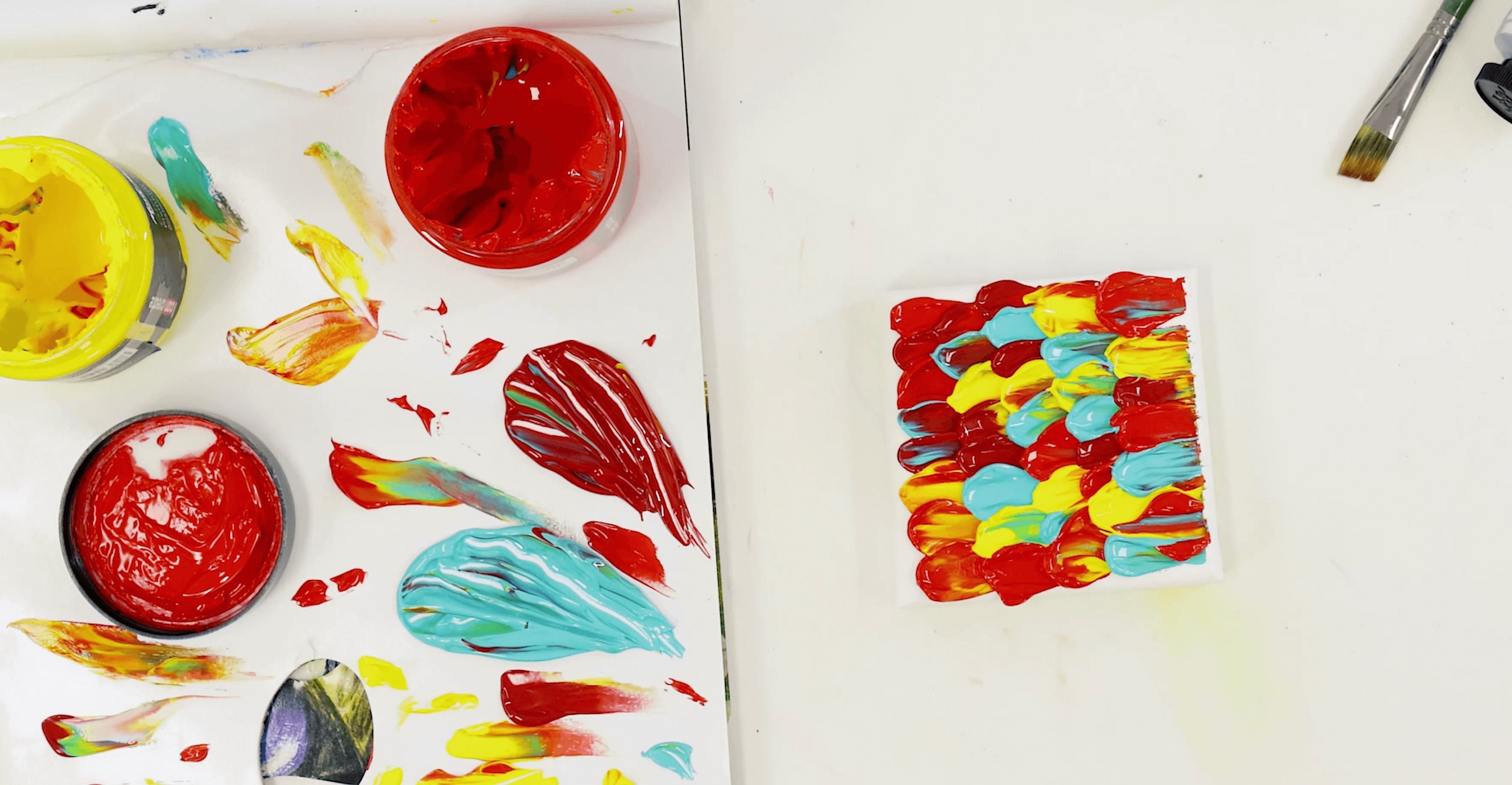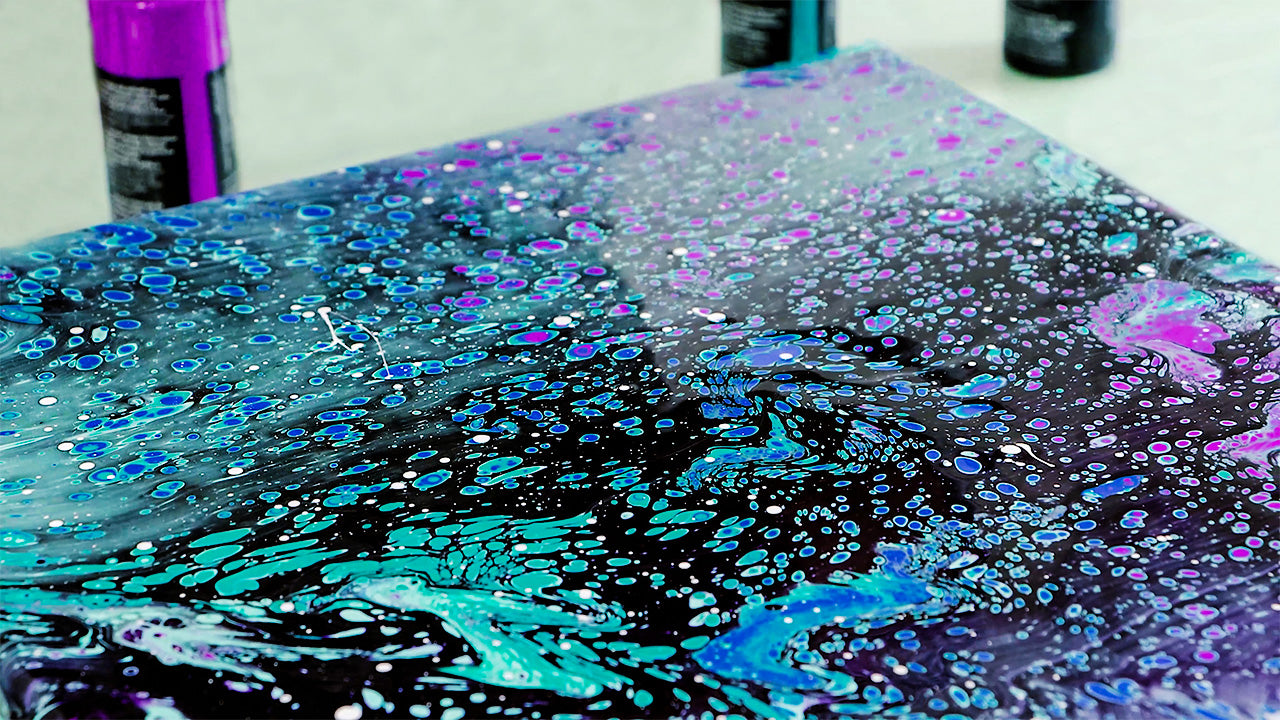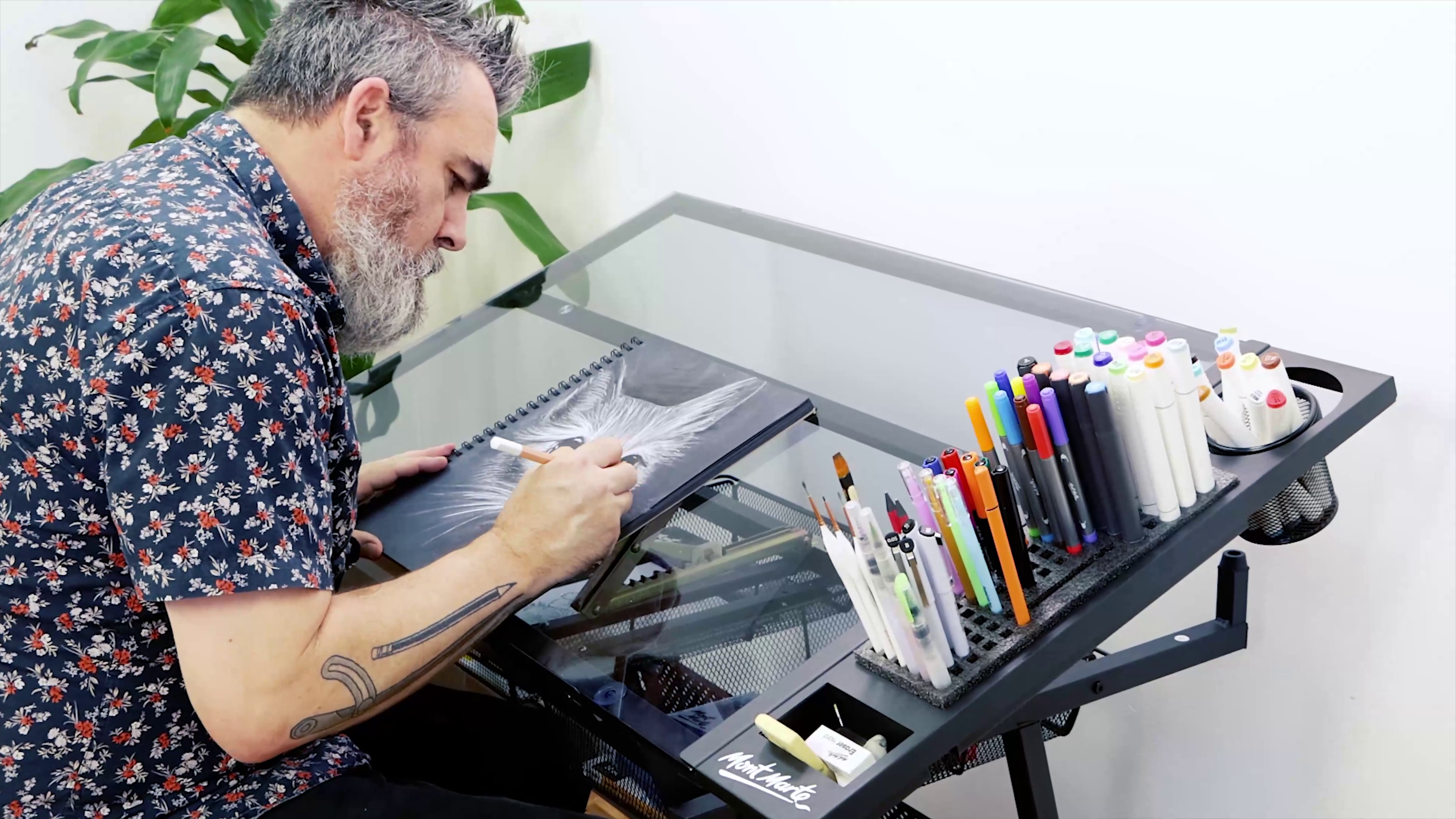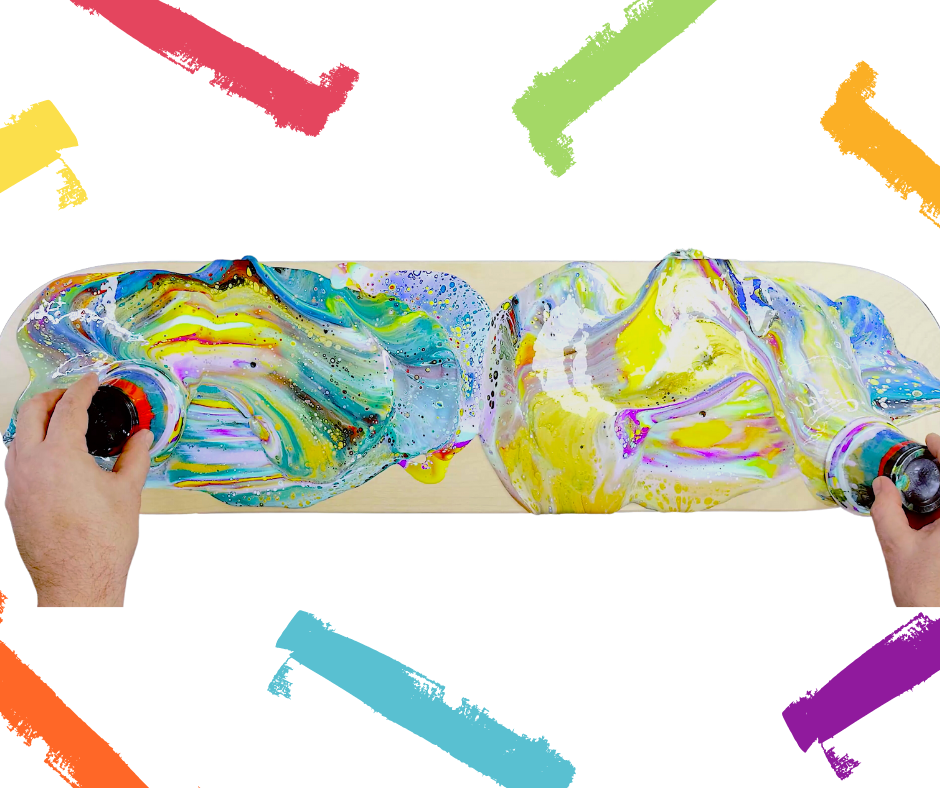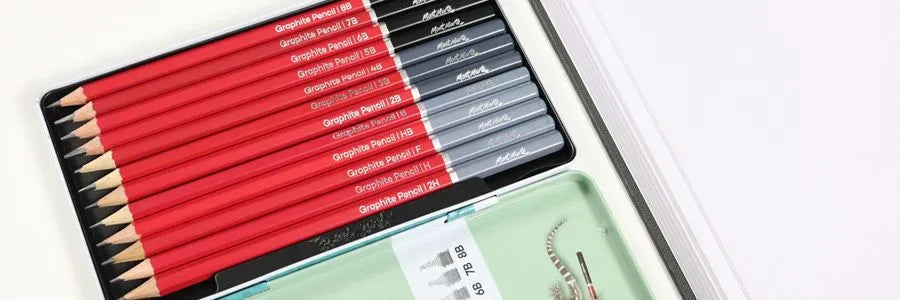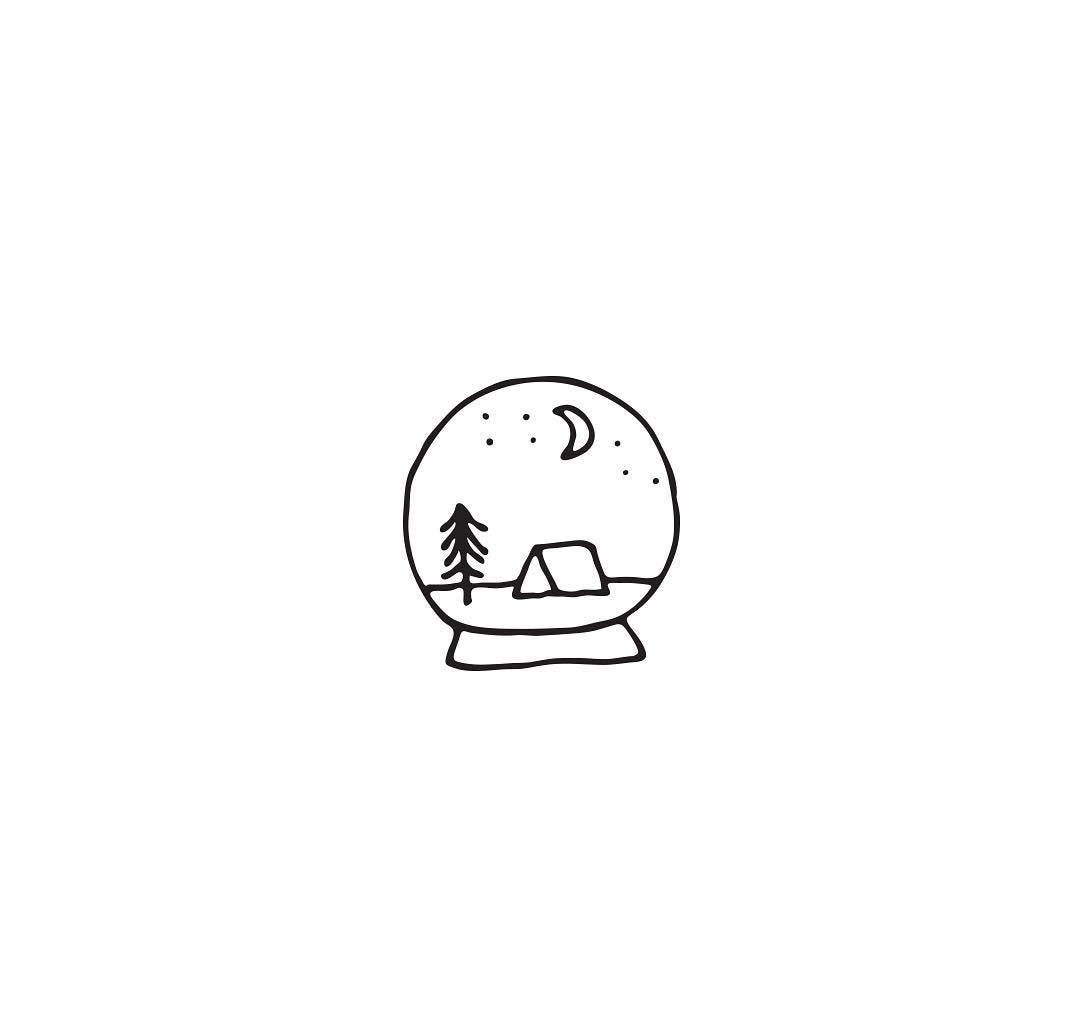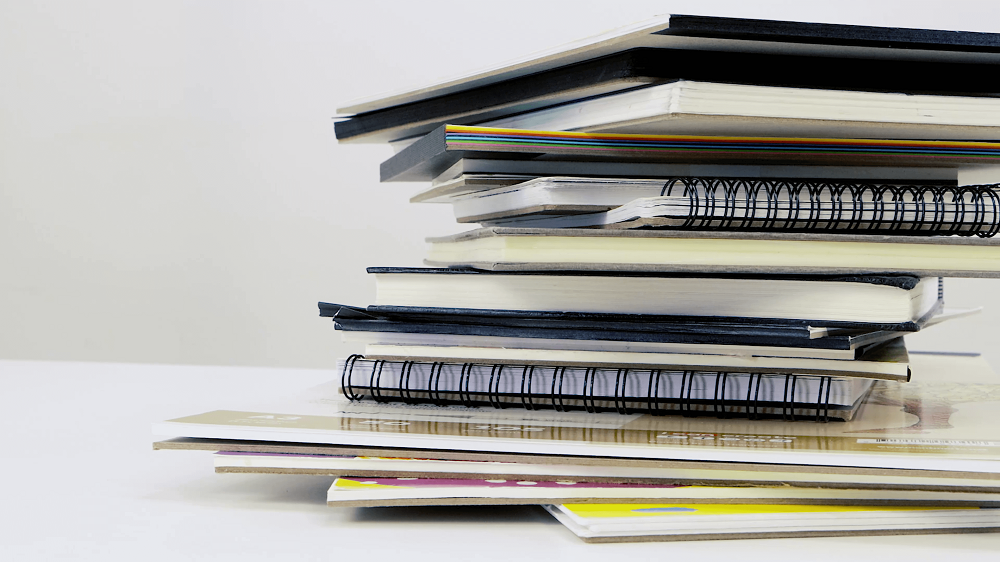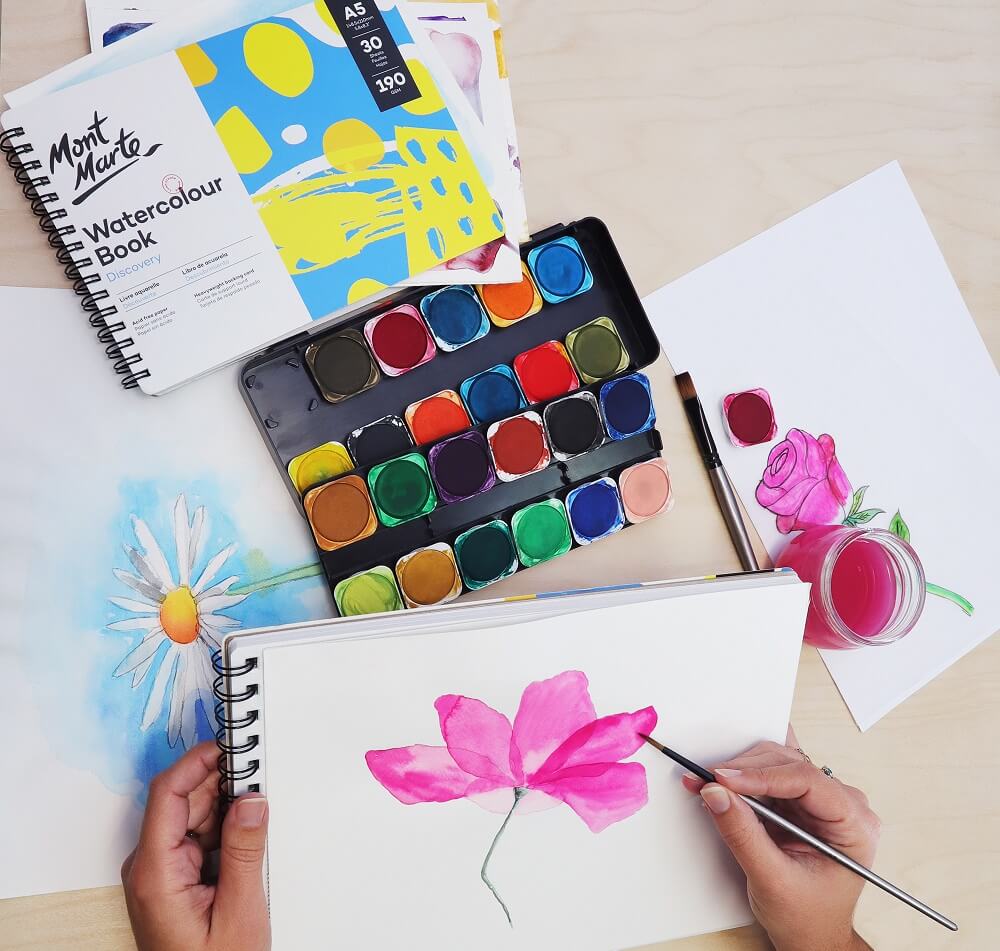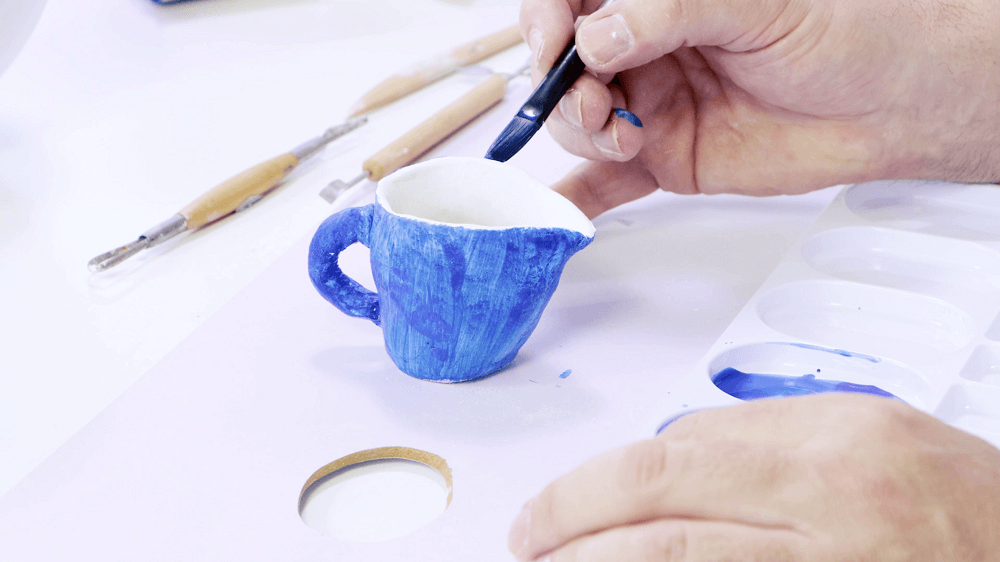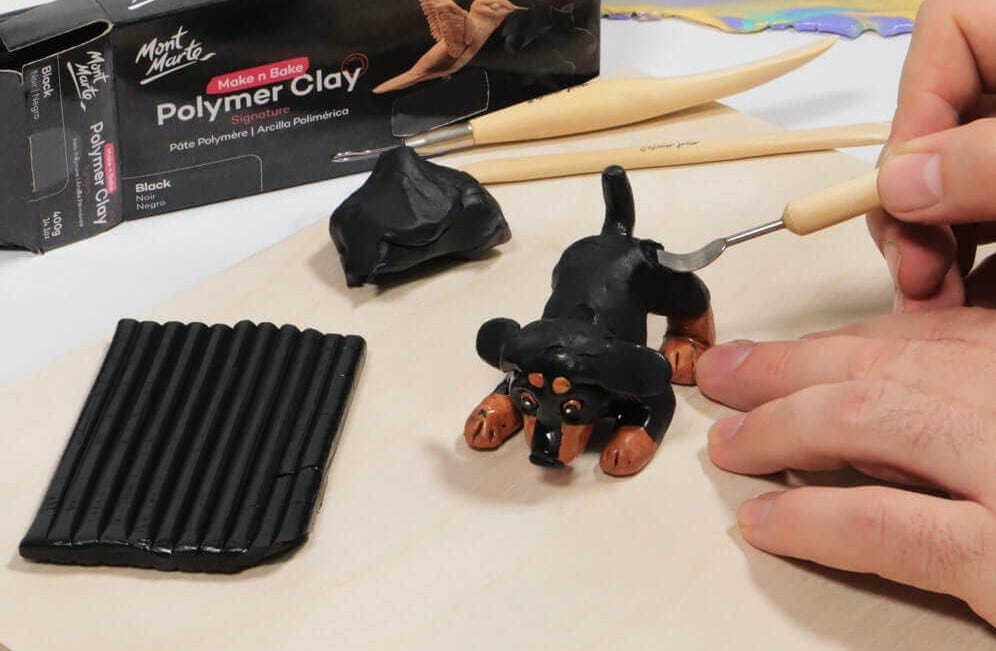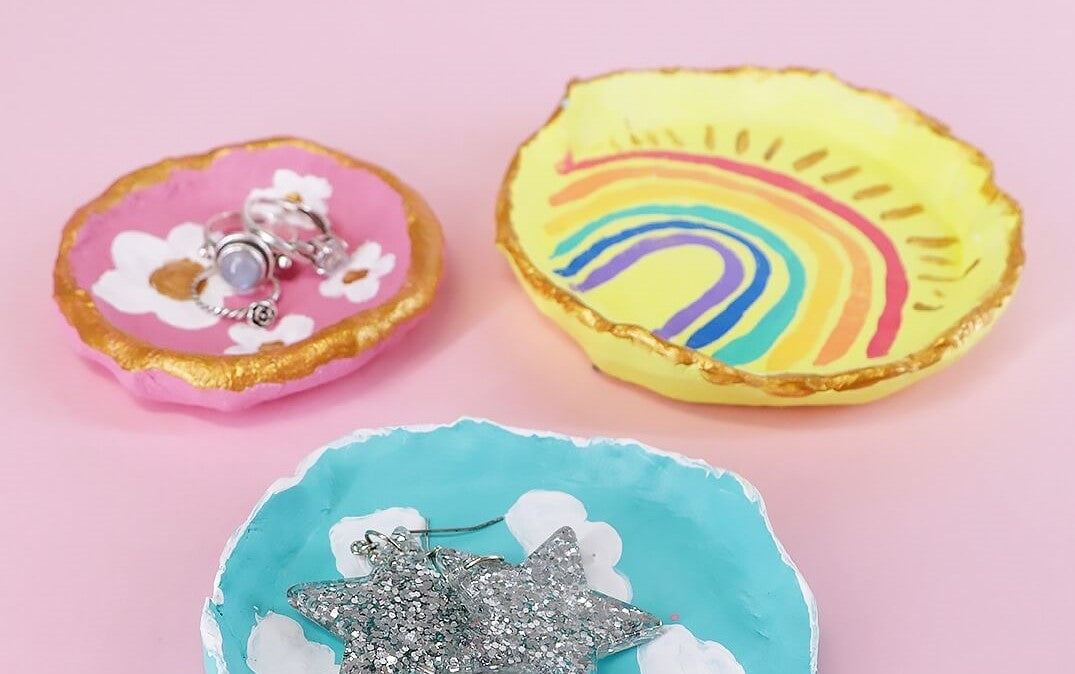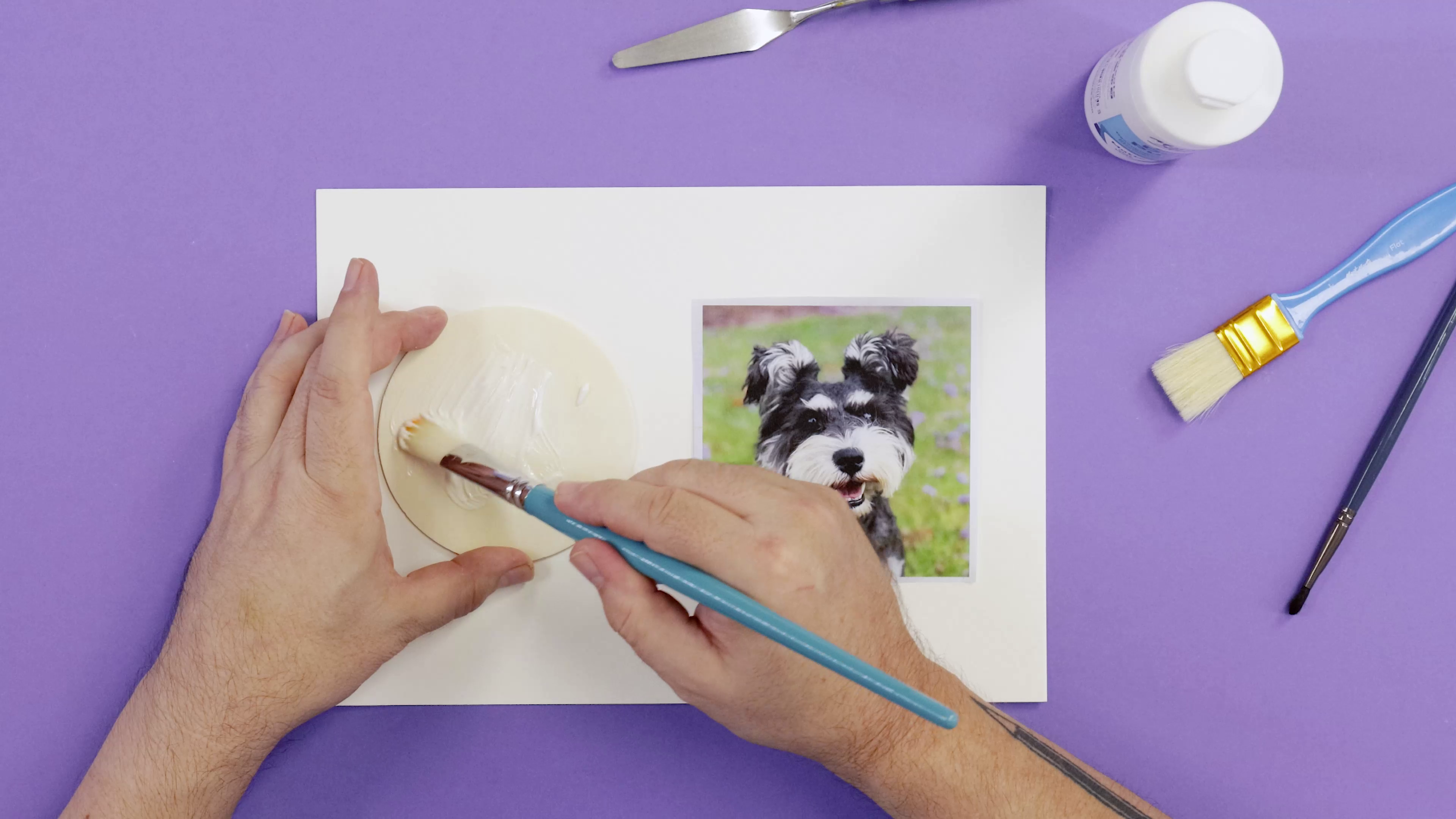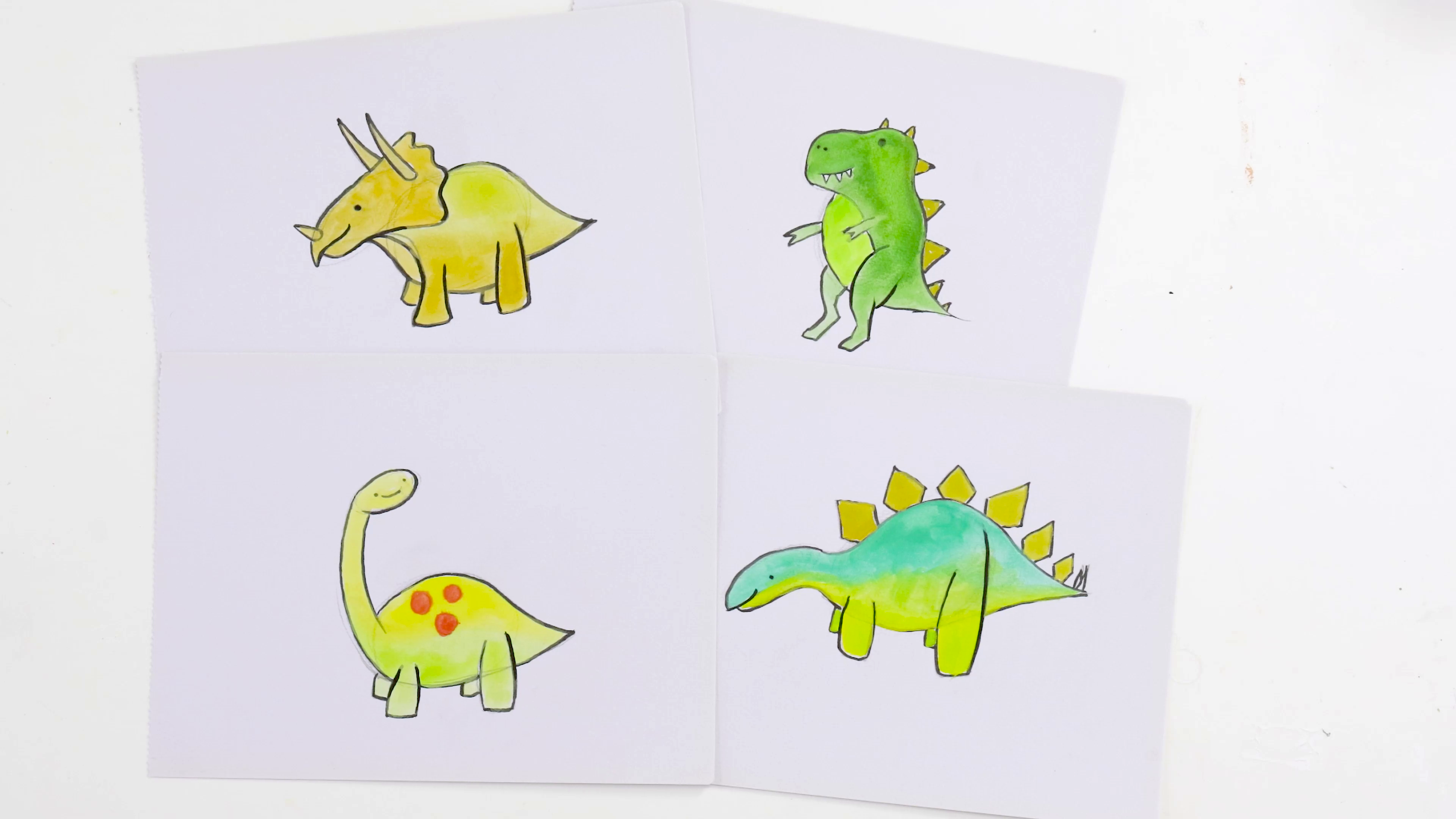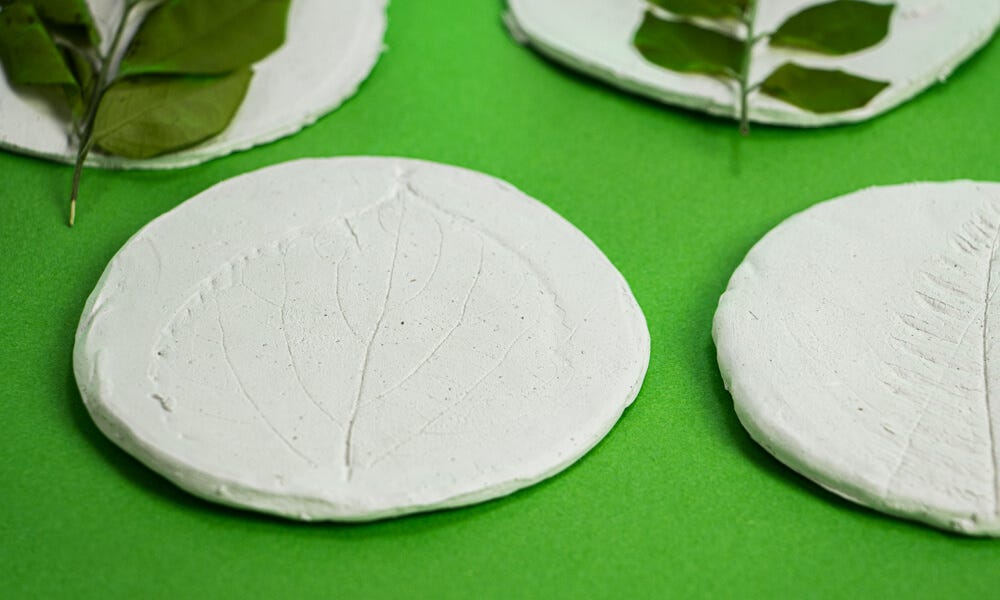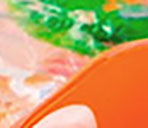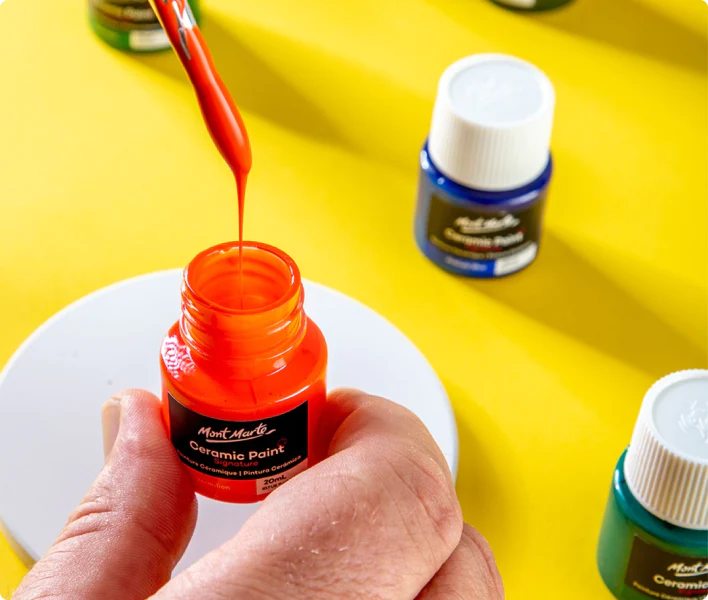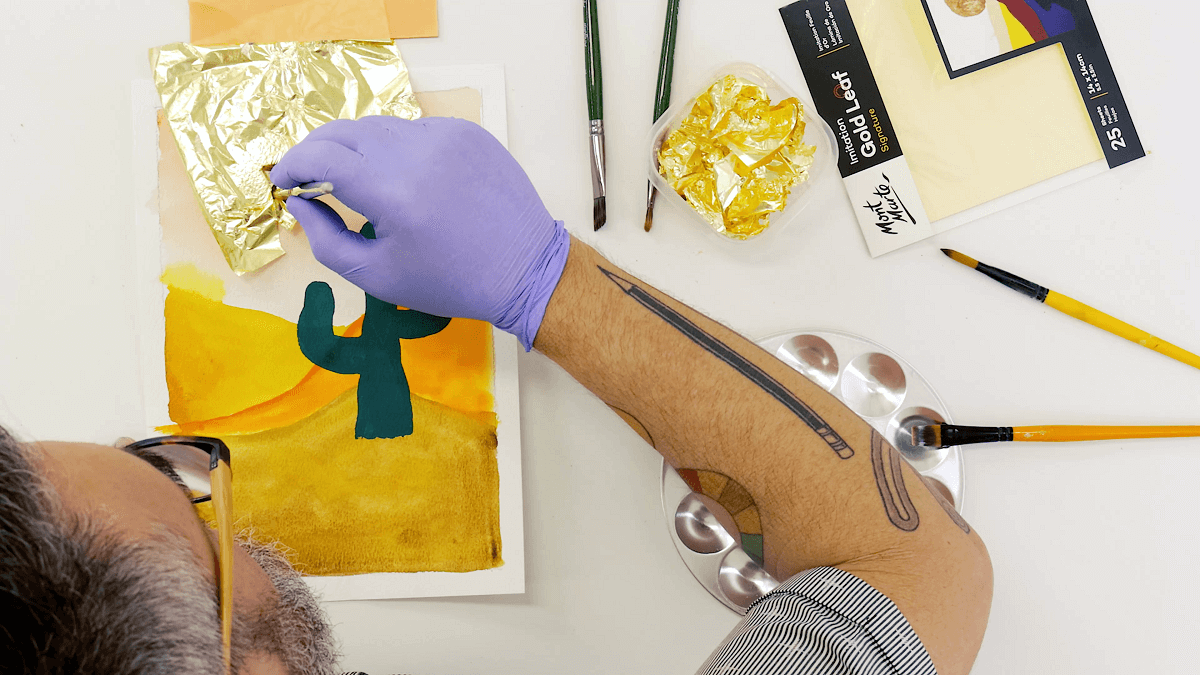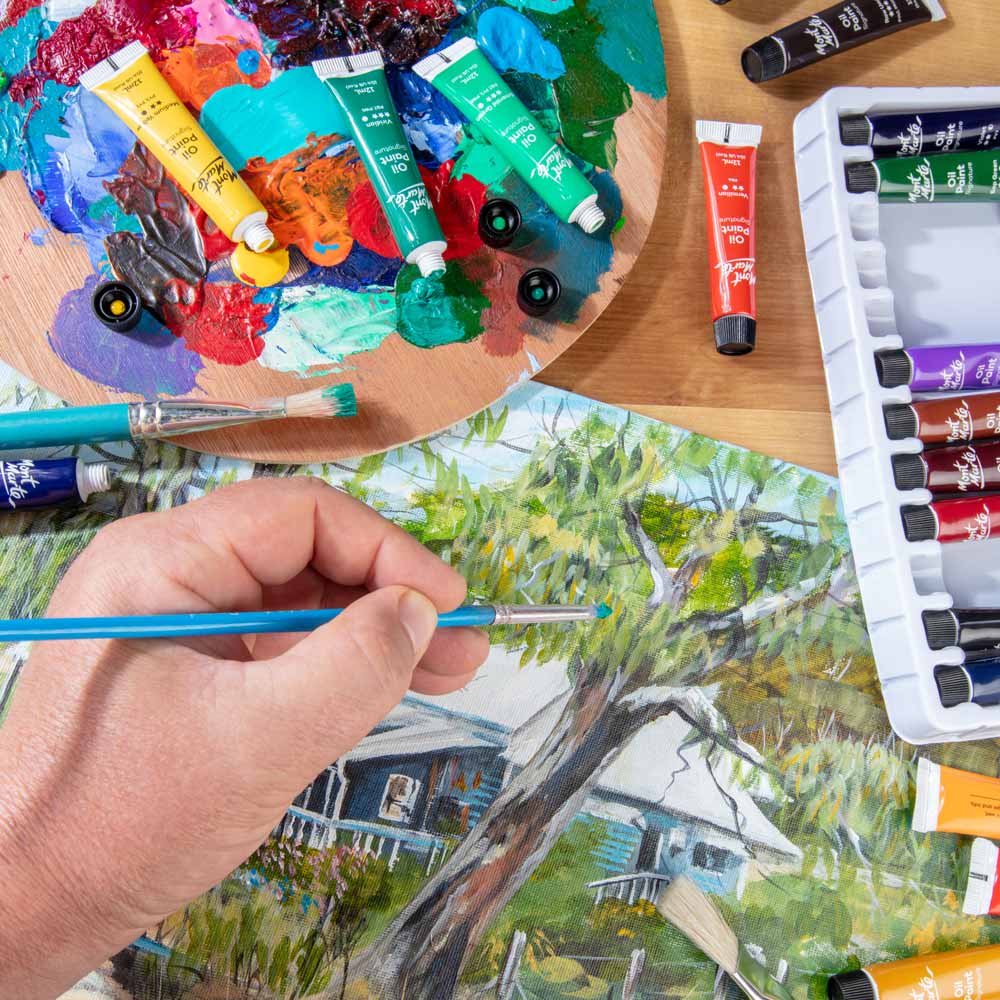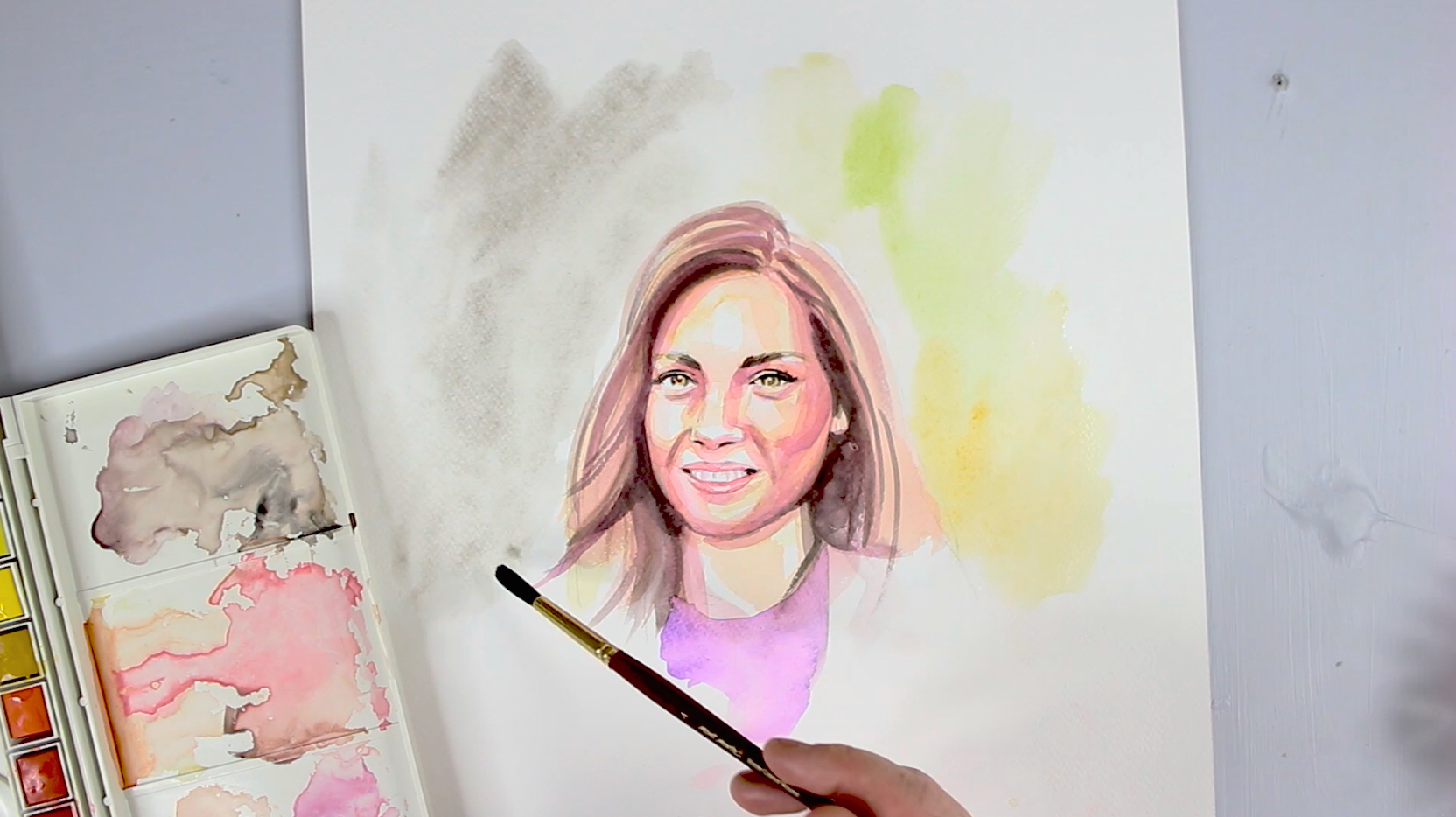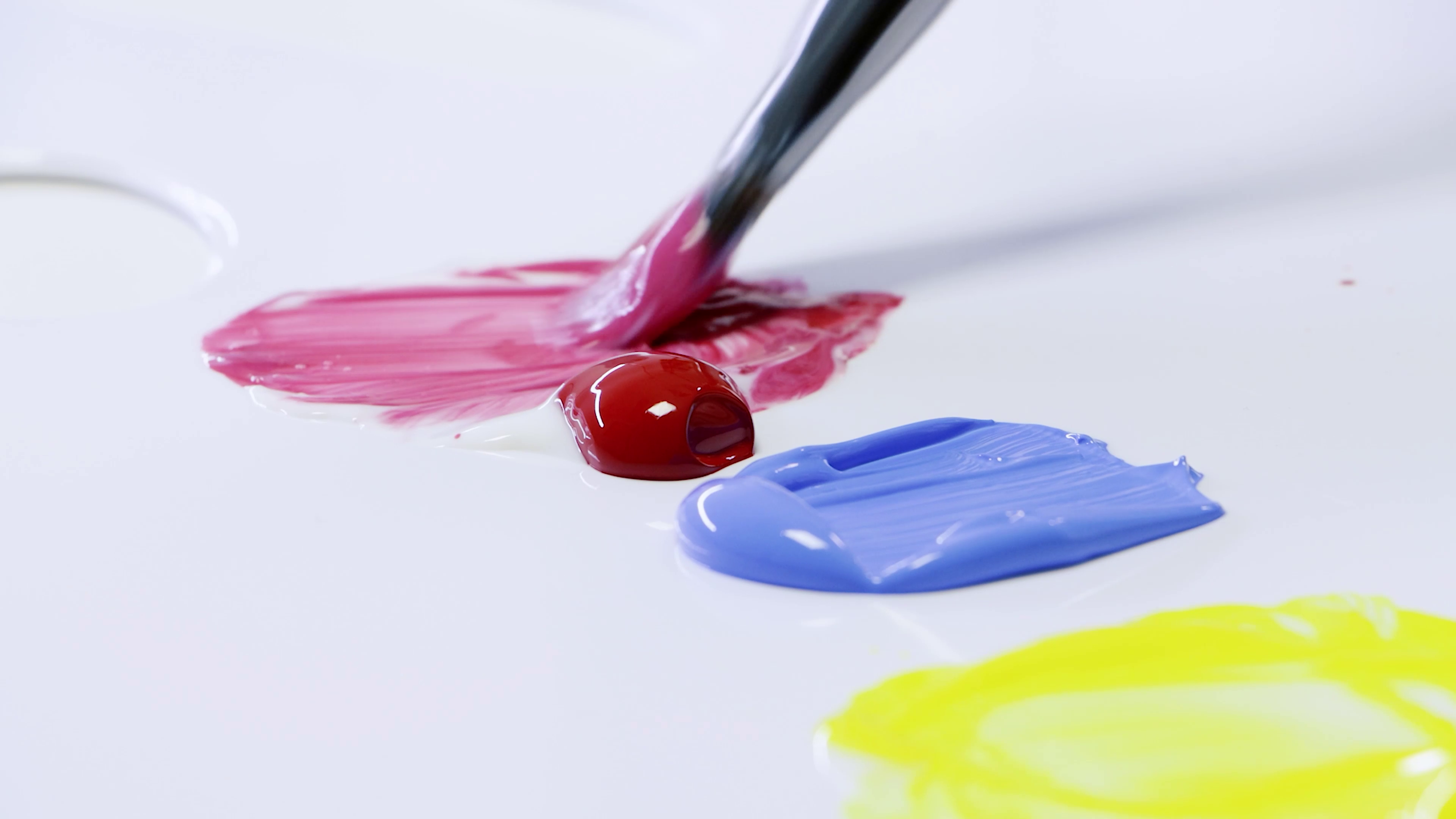Art techniques and styles can sound much more complex than they are. To break down the wall between you and creating, we’ve put together an art dictionary based on frequently asked questions, so read on to learn more! You may just discover a new technique to try that’s a lot easier (and more fun) than it sounds.
What is sgraffito?

Sgraffito has a complicated-sounding name but it’s a simple technique. It basically means you scratch through one layer of your artwork to reveal a different colour or texture beneath.
For example, let’s say you create a rainbow base layer with oil pastels, and then add a layer of black on top. Using a pointed object such as a toothpick or a pencil, you would scratch away parts of the black layer, revealing the bright base beneath through the thin scratched lines. That’s sgraffito! Check out this technique and more in our 10 oil pastel techniques blog.
Define: gilding

If you’ve ever used gold leaf products or gold foil paint, you’ve gilded! You may have gilded a frame, an artwork, or clay works; so long as the gold substance is applied to the surface, it’s gilded.
To learn more about using gold leaf, dive into our gold leaf techniques blog.
What is perspective drawing?

Drawing perspective is all about capturing a three-dimensional subject on a two-dimensional surface. Commonly used forms include one-point, two-point, and three-point perspectives which are techniques undertaken to provide a guideline to your artwork.
For example, in a two-point perspective piece, there are two vanishing points that anchor your lines of perspective and keep your subject matter looking realistic. These vanishing points are spots on the page where objects and details seem to disappear, either growing too small or running off the surface. Imaginary straight lines extend from these points, crossing over each other to create right angles which are the points of convergence.
This may be used to depict two roads meeting, the corner of a building, the inside of a room, or some shape that draws your eye to the point where the two lines of perspective meet at a right angle. When drawing structures such as buildings with this perspective, the edges of the buildings follow the imaginary lines of perspective, helping to keep your work looking 3D!
Whether you’re strictly conforming to perspective, or just want rough accuracy, it’s handy to understand how it works when you’re creating on a 2D surface. Have a go at home by checking out our collection of perspective tutorials and inspo.
Define: negative space
Negative space is the empty space around your subject matter. When you create an artwork, you’re starting with nothing but this space; every time you add in colours and details, it gets smaller. Negative space is great for creating bright highlights or separating your subject matter from a background. Try using masking fluid or tape to block out negative space and keep it pristine when creating.
You can also create negative space by adding undetailed blocks of colour to your canvas. For example, a painting may be bordered with opaque black tree silhouettes, which act as negative space on the canvas. The main thing is that negative space is lacking any details and is just a colour block.
What is composition in art?

Composition at its core is the arrangement of visual elements in your artwork. Visual elements include line, shape, colour, value, texture, and negative space. These are then organised to create a feeling or represent an idea on the art surface. If well-organised and balanced, the painting is harmonious, while an unbalanced painting can create tension for the viewer. The kind of feeling you’d rather create is totally up to you!
Your composition also changes how your viewer looks at the artwork and the journey their eyes take across the canvas. If you want to feature an area, create a strong contrast to draw the eye. This might involve the level of detail in the area, the colour palette, size, perspective, placement, tone, and more. Altering these visual elements will affect where the viewer looks first, second, third, and so on across the artwork, so it’s good to experiment with creating contrast, rhythm, and movement with your composition.
Find out more about composition in our handy article that breaks down the details!
What’s ombre in art?
You may have heard of ombre when getting your hair done, but basically, ombre is another word for creating a colour gradient. It’s when you transition one colour hue to another smoothly, blending the colours seamlessly together in the centre.
How to paint en plein air?
Painting ‘en plein air’ basically just means painting outside! This practice boomed during the French Impressionism era, with artists such as Claude Monet, Pierre-Auguste Renoir, Alfred Sisley, and Frédéric Bazille popularising the practice. Painting outdoors really took off when the paint tube was invented in the mid-1800s because finally, artists could bring their paints on the go.
The whole point of setting up outside was to create a more candid painting, capturing the impression of a setting as seen through human experience. Think of an in-motion picture of someone blowing out their birthday candles. This captures the idea of growing older, of celebrating, without focusing on the details of the moment. Painting in the moment and amongst the elements was done to capture nature in the same way.
Define: Impressionism

Impressionism was started and popularised in France during the 1860s. The artists who were out painting en plein air began the Impressionism movement, focusing on capturing a setting as seen through human experience. There were no fine details and artists played with colours and composition to represent the idea of an environment, rather than a picture-perfect replica. Recreating the movement of light in the captured space is at the heart of the art style.
The style uses short, impasto brushstrokes with broken colour painting to create optical blending. We define some of these other terms below so read on to discover more!
Define: Broken colour
The broken colour technique creates an optical illusion, visually mixing colours on the canvas, even though they’re unmixed. Broken colour artists place short strokes of different colours close together, letting layers of paint show through to make the paint appear to blend from a distance. As your eyes move between different colours in the artwork, they appear to vibrate, optically mixing to create a larger idea.
When trying this at home, remember basic colour mixing. Red and yellow brushstrokes layered and scattered around each other blend at a distance to create orange tones, while blue and yellow near each other make a green impression. This technique ties in perfectly with Impressionism as it’s all about capturing the idea of a colour, not its exact tone.
Define: Impasto

Impasto is a type of paint application where you brush it on thickly so that it stands out from your painting surface. Viscous paints such as Oils or our Dimension Acrylic are perfect for this, but we also have a painting medium called Impasto to transform your acrylic paints for impasto painting. The medium helps regular acrylics keep their shape when applied without diluting their colour.
What’s Pointillism?

Pointillism is a style and technique pioneered by French artists George Seurat and Paul Signac in the mid-1880s. It is a spin on Impressionism with calculated colour placement so that painted dots seem to blend optically rather than on the canvas. It’s kind of like how pixels work on a TV screen but the dots are placed varying distances apart to create a bigger picture. It’s a technique best viewed at a distance as up close the dots appear separate, while from far away they blend together.
We have a handy article on Pointillism techniques if you want to try it out for yourself!
What is stippling?

Stippling can be done with wet or dry media and involves dotting your pen, paintbrush, charcoal, pastel, or pencil up and down on your art surface. This creates fine dots of colour which you can place close together to create deeper tones or further apart to create lighter tones. It’s a popular technique used in pointillism paintings with very fine brushwork, or portraiture with graphic ink pens.
How to crosshatch

This kind of shading is simple to do by drawing perpendicular parallel lines that intersect and overlap. The more the lines are concentrated and closer together, the darker the tones are, perfect for creating shadows. The absence of lines or spaced-out lines indicates highlighted or mid-tone areas of the artwork.
We have a blog that dives into hatching and 25 other drawing techniques, so check it out to discover more!
How to scumble

Scumbling is also known as dry brush painting and is ideal for layering colours to create dimensions. Try applying thin layers of paint with a dry brush over dried colours on your canvas to scumble the paint and let the dried colour peek through. As the brushstrokes are applied lightly, the scumbled colour breaks in places, letting more of the paint underneath peek through.
Usually, lighter colours are scumbled over darker colours as it’s easier to see the darker tones shining through. It also creates highlights that glow from within with the dried layer providing a dynamic undertone. It’s perfect for capturing reflected light on a body of water as it suggests movement breaking the surface tension and revealing the water below.
Learn how to scumble in our handy how-to video!
Now that we’ve removed the mystery around some of these common art terms, we hope you feel ready to have a go trying some of the techniques and styles at home!
If you’re feeling inspired, why not start a new art project, go back to an old one, or just look into an art style that piqued your interest?
If you do get creating, #montmarteart or tag us @montmarteart on Instagram or Facebook. We want to see what you come up with!
Want more? Check out our Projects and How-to’s for some inspiration. If you’re chasing more techniques, read up in our Tips and Techniques collection.


